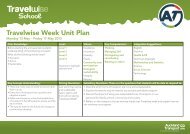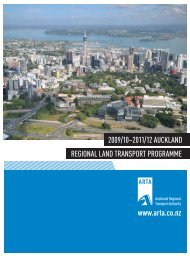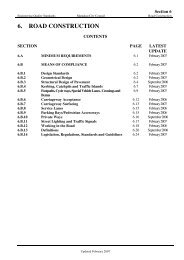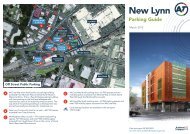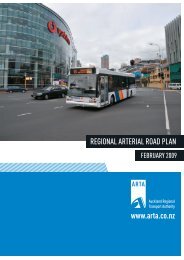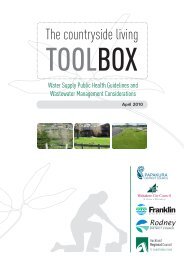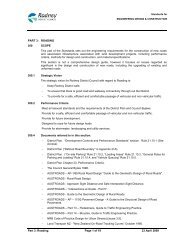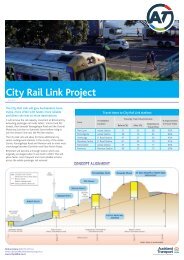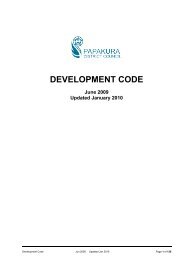ARTA Annual Report 2009 - Auckland Transport
ARTA Annual Report 2009 - Auckland Transport
ARTA Annual Report 2009 - Auckland Transport
Create successful ePaper yourself
Turn your PDF publications into a flip-book with our unique Google optimized e-Paper software.
If a hedging instrument expires or is sold, terminated, exercised or revoked, or it no longer meets the criteria<br />
for hedge accounting, the cumulative gain or loss on the hedging instrument that remains recognised<br />
directly in equity from the period when the hedge was effective will remain separately recognised in equity<br />
until the forecast transaction occurs. When the forecast transaction is no longer expected to occur, any<br />
related cumulative gain or loss on the hedging instrument that remains recognised directly in equity from<br />
the period when the hedge was effective will be recognised in the income statement.<br />
Trade and other receivables<br />
Trade and other receivables are initially measured at fair value and subsequently measured at amortised<br />
cost using the effective interest method, less any provision for impairment.<br />
Trade receivables are due for settlement not more than 30 days from the date of recognition.<br />
A provision for the impairment of receivables is established when there is objective evidence that <strong>ARTA</strong> will<br />
not be able to collect all amounts due according to the original terms of receivables. The amount of the<br />
provision is the difference between the asset’s carrying amount and the present value of estimated future<br />
cash flows, discounted using the effective interest method. Debts which are known to be uncollectible are<br />
written off during the period in which they are identified.<br />
Inventories<br />
Inventories such as spare parts, stores and finished goods are stated at the lower of cost and net realisable<br />
value. Cost comprises direct materials, direct labour and an appropriate proportion of variable and fixed<br />
overhead expenditure, the latter being allocated on the basis of normal operating capacity.<br />
Costs are assigned to individual items of inventory on the basis of weighted average cost.<br />
Net realisable value is the estimated selling price in the ordinary course of business, less the estimated costs<br />
of completion (if applicable) and the estimated costs necessary to make the sale.<br />
Property, Plant and Equipment<br />
Property, plant and equipment consists of operational assets including land and improvements, rolling<br />
stock, wharves, buildings, plant and equipment, and fixtures and fittings.<br />
Property, plant and equipment is valued at cost, less accumulated depreciation and impairment losses.<br />
(a)<br />
Additions and subsequent costs<br />
The cost of an item of property, plant and equipment is recognised as an asset if, and only if, it is probable<br />
that future economic benefits or service potential associated with the item will flow to <strong>ARTA</strong> and the cost<br />
of the item can be measured reliably.<br />
87



